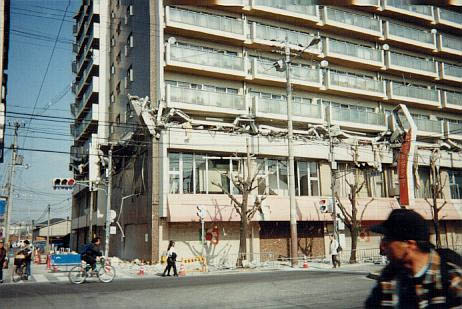Inspections of pre-1981 buildings far from complete
As part of an effort to assess the earthquake-resistance of older buildings in Tokyo, the City announced on March 4 that only 6.8% of rental-only residential buildings and 17.1% of condominiums built prior to 1981 to the old earthquake codes (called kyu-taishin) have been inspected.Read more
Buildings in Minato-ku to be designated as tsunami-evacuation points
 Selected buildings in Tokyo's Minato ward will be soon be designated as tsunami-evacuation points. Negotiations are underway between the local city council and 16 companies who own buildings of 10-storeys or higher. Approximately 36.5 million Yen has been set aside in the City's budget.
Selected buildings in Tokyo's Minato ward will be soon be designated as tsunami-evacuation points. Negotiations are underway between the local city council and 16 companies who own buildings of 10-storeys or higher. Approximately 36.5 million Yen has been set aside in the City's budget.
Several commercial and residential buildings in Arakawa-ku and Koto-ku have already received designations. While Arakawa-ku provided some assistance with the purchase of emergency supplies and rations, Minato-ku will provide all necessary supplies to the co-operating buildings. They are also considering providing assistance with any upgrades to building security so that they may be accessible to evacuees in an emergency situation.Read more
Voting rules may change to speed up earthquake-retrofitting

The Ministry of Land, Infrastructure, Transport and Tourism (MLIT) is considering bringing in relief measures that will reduce the number of votes needed by apartment owners when deciding on earthquake-retrofitting.
Currently, a majority vote is needed for small repairs, but if the building association wishes to carry out large-scale repairs which may include earthquake-retrofitting, at least 75% of apartment owners must agree to the repairs. Proposed changes by the MLIT would change this to a majority vote. Read more
Residents told they are 'on their own' in a major earthquake
 Residents of The Tokyo Towers - a 58-storey condominium complex in Chuo-ku's Kachidoki bayside area - attended an information session on disaster preparedness held by the building's management committee in October. Following the Tohoku earthquake, the committee have been looking at revising their disaster manual.
Residents of The Tokyo Towers - a 58-storey condominium complex in Chuo-ku's Kachidoki bayside area - attended an information session on disaster preparedness held by the building's management committee in October. Following the Tohoku earthquake, the committee have been looking at revising their disaster manual.
Mr. Motose, who is in charge of disaster management in the committee, informed residents that they may be without electricity and elevators in the event of a major earthquake, and should prepared to have enough supplies to last a month.
Residents were also told of possible ways the building could be affected in an earthquake. Read more
No. of new earthquake insurance policies up 7.3%
 According to the Non-Life Insurance Rating Organization of Japan (NLIRO), the number of new earthquake insurance policies in 2011 increased by 7.3% from the year before to 9,335,873 policies.
According to the Non-Life Insurance Rating Organization of Japan (NLIRO), the number of new earthquake insurance policies in 2011 increased by 7.3% from the year before to 9,335,873 policies.
In addition, the number of contracts on residential properties in force at the end of the 2011 fiscal year had risen by 10.5% to 14,088,665. This is the highest growth rate seen since 1996 when it increased by 15.3%. In Fukushima Prefecture, the rate increased by 51.3%. Incidentally, Fukushima previously had a low proportion of property owners with earthquake insurance. Miyagi Prefecture had the second highest increase of 30.1%, and Iwate Prefecture was third with a 23.7% increase.Read more
Insurer wins appeal over earthquake-damage claim
An insurance company has won its appeal against a case where the owner of a top-floor unit demanded an insurance payout for water damage from broken pipes caused by the Tohoku earthquake.
An update on building damage from the Tohoku earthquake
 Just after the March 11 Tohoku earthquake it was announced that zero buildings had collapsed, which everyone naturally assumed was a testament to the strict building codes in Japan.
Just after the March 11 Tohoku earthquake it was announced that zero buildings had collapsed, which everyone naturally assumed was a testament to the strict building codes in Japan.
However, it has now been acknowledged that 100 apartment buildings in Sendai city have been completely destroyed.
